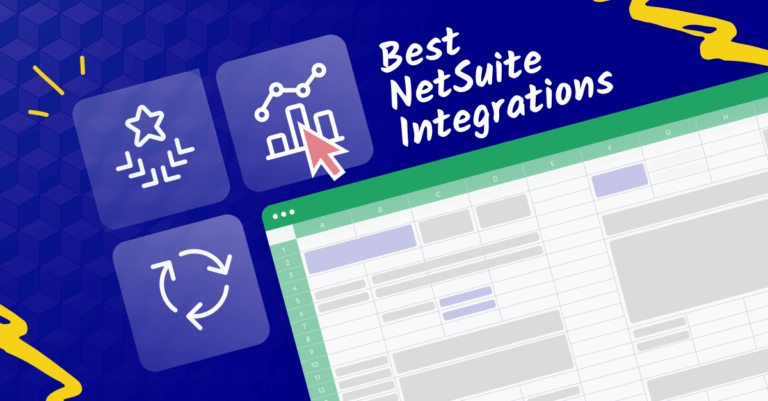NetSuite enterprise resource planning software not only streamlines your business but the system also offers tools to help it grow and thrive.

Businesses worldwide are discovering that an Oracle NetSuite ERP can transform how they operate. That sentence may seem like an exaggeration or a sales pitch. But it’s not.
More than a decade ago, All-Safe was experiencing problems.
The business couldn’t manage ballooning data volumes on its QuickBooks software. That accounting system also didn’t integrate with All-Safe’s CRM and inventory systems, so the company couldn’t easily access critical business information. Ultimately, software issues caused delays and hampered growth.
So, All-Safe decided to implement an Oracle NetSuite ERP system in 2007. This platform tied all the individual systems together, so operations ran more efficiently.
Then, business changed for All-Safe. The company saw steady growth post-ERP implementation. In fact, productivity doubled through on-demand access to financial, inventory, and customer information. And All-Safe experienced a 25% increase in B2C sales because sales reps and managers gained complete sales force automation and lead-to-order-to-cash management.
So, why did a single system make such a difference for this company? The secret lies in the free flow of information between departments and employees. So, let’s explore how an ERP provides that freedom.
What is an ERP?
Think of an ERP as the digital engine that runs a company. The acronym stands for “enterprise resource planning.” And according to its simplest definition, an ERP is software that manages all business operations on a single platform. And an Oracle NetSuite ERP is one of the leading systems available.
For example, a shoe manufacturer might run its accounting, inventory management, and supply chain management systems through an Oracle NetSuite ERP. So, it only needs one program to track the flow of raw goods to its factory, the items in its warehouse, the packaging and shipping of those items to customers, and the finances associated with the business.
Of course, ERP software can do much more. It uses a system of modules to handle various operations, connecting them through a central database. The most common modules include:
- Financial Management – Found in almost all ERPs. It tracks all transactions, decreases budgeting and forecasting cycle times, accelerates financial close, and ensures compliance.
- Warehouse Management – Manages warehouse activities, like packing and shipping. It also increases their efficiency.
- E-commerce – Known as SuiteCommerce, this module allows users to manage front- and back-end operations for web shops.
- Inventory Management – Shows inventory numbers (updated in real-time) and tracks related metrics.
- Human Resource Management – Manages employee records and tracks workforce trends.
- Customer Relationship Management – Improves customer service by managing client communications and facilitating leads.
- Order Management – Organizes customer orders and then tracks them to delivery.
- Marketing Automation – Helps create a system for building and executing marketing campaigns and then measuring their success.
- Supply Chain Management – Tracks and manages goods as they journey from supplier to manufacturing to customers.
A company can have these modules customized to suit its needs. And, if an Oracle NetSuite ERP is implemented correctly, various departments can access each system and pull data that has been updated in real-time. Ultimately, an ERP equips each company division with a wealth of accurate data and analytics, eliminating inefficiencies and data duplications and helping leaders make better decisions.

Who uses an ERP?
Various companies—from billion-dollar corporations to mid-size and small businesses—have benefited from ERP investments. The software’s modules give it flexibility and help it scale with the business as it grows. They also allow ERPs to suit nearly any industry, from consulting to hospitality to wholesale distribution.
Many businesses deploy ERPs after growing frustrated with single-point solutions. A single-point software system only addresses one issue within a company. So, it doesn’t coordinate information between departments and becomes prone to duplications, errors, confusion, and delays.
Instead, these companies opt for an ERP that:
- Cuts costs by eliminating inefficiencies, automating simple tasks, and minimizing errors.
- Facilitates thorough and accurate key performance indicator reporting and tracks meaningful trends. So, users get overall views of company health as well as detailed business insights.
- Provides authorized employees fast access to real-time project updates from any area of the company.
- Tracks each transaction and automates simple financial tasks to produce accurate financial reports that comply with reporting standards and governmental data security regulations.
- Strengthens financial controls.
- Allows employees to access information from any device—anywhere in the world.
- Guards data with the best possible security technology.
- Allows for minor to significant operational changes as the company grows.
- Increases customer satisfaction by tracking support tickets, survey responses, etc.
And, due to an ERP’s modular construction, even small companies can afford the software. In fact, the annual cost can range from roughly $10,000 to millions of dollars, depending on the modules and deployment model a business needs.
Types of ERP deployment models
On-Premises – All ERPs existed as on-premises systems when they first appeared in the early 1990s. This means they were housed in servers owned by the companies who used them and housed on company property.
On-premises ERP systems still exist, although current technology has dented their popularity. Businesses that use this deployment model are responsible for their ERP’s maintenance, security, upgrades, and patches. The upkeep often requires an entire IT staff.
Cloud-Based – This deployment model houses software in third-party servers located off-site. Company employees can then access the platform through a web browser from anywhere in the world.
Providers often offer cloud-based ERPs through a software-as-a-service (SaaS) delivery model. So, they are responsible for managing, upgrading, and patching the system.
Many businesses are now opting for this type of ERP because it offers greater flexibility than on-premises models and doesn’t require expensive servers and additional IT staff.
Hybrid – Some companies, especially those who have used on-premises ERPs for years, opt for a hybrid approach, combining elements of on-premises and cloud-based deployment models. They may use the on-premises platform for their headquarters and switch to a cloud-based ERP for regional offices. Or they may use the two systems for different functions.
Open-Source – Some providers offer inexpensive—or even free—ERP software. But, of course, there’s a catch. Users receive little support and typically must configure the platform themselves.
ERP implementation made easy
On-Premises – All ERPs existed as on-premises systems when they first appeared in the early 1990s. This means they were housed in servers owned by the companies who used them and housed on company property.
On-premises ERP systems still exist, although current technology has dented their popularity. Businesses that use this deployment model are responsible for their ERP’s maintenance, security, upgrades, and patches. The upkeep often requires an entire IT staff.
Cloud-Based – This deployment model houses software in third-party servers located off-site. Company employees can then access the platform through a web browser from anywhere in the world.
Providers often offer cloud-based ERPs through a software-as-a-service (SaaS) delivery model. So, they are responsible for managing, upgrading, and patching the system.
Many businesses are now opting for this type of ERP because it offers greater flexibility than on-premises models and doesn’t require expensive servers and additional IT staff.
Hybrid – Some companies, especially those who have used on-premises ERPs for years, opt for a hybrid approach, combining elements of on-premises and cloud-based deployment models. They may use the on-premises platform for their headquarters and switch to a cloud-based ERP for regional offices. Or they may use the two systems for different functions.
Open-Source – Some providers offer inexpensive—or even free—ERP software. But, of course, there’s a catch. Users receive little support and typically must configure the platform themselves.
An Oracle NetSuite ERP may smooth a company’s operations and eliminate inefficiencies, but the platform can get complicated. In fact, many companies who try to implement it themselves often fail and create more work and headaches for their staff.
Fortunately, Suite Solution can help your company implement and customize an Oracle NetSuite ERP to fit your specific needs. Our help and ongoing support will protect you from the system’s pitfalls so you only experience its benefits. Call today for a consultation.






Thank you for your sharing. I am worried that I lack creative ideas. It is your article that makes me full of hope. Thank you. But, I have a question, can you help me?
Your point of view caught my eye and was very interesting. Thanks. I have a question for you.
Your article helped me a lot, is there any more related content? Thanks!
I don’t think the title of your article matches the content lol. Just kidding, mainly because I had some doubts after reading the article. https://www.binance.com/it/join?ref=S5H7X3LP
Thanks for sharing. I read many of your blog posts, cool, your blog is very good.